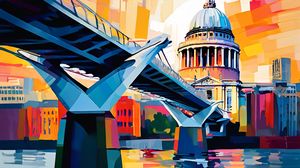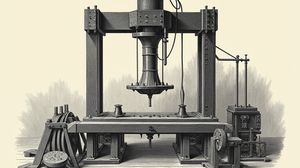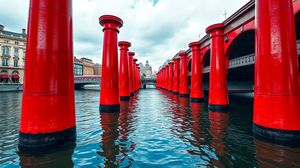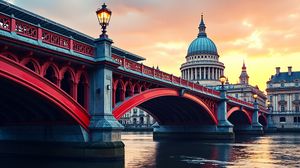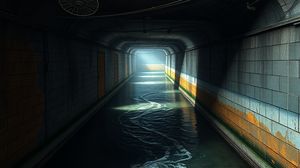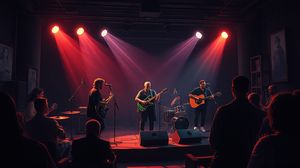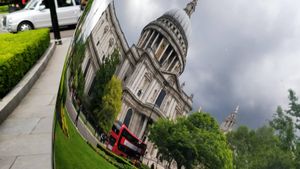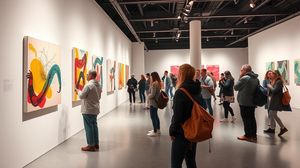
The Tate Modern, situated in the vibrant Bankside area of London, is one of the world's leading contemporary art galleries, housed in the former Bankside Power Station. Its vast industrial space provides a captivating backdrop for showcasing modern and contemporary art from around the globe.
Since its opening in 2000, the Tate Modern has transformed from an energy hub to a cultural one, attracting millions of visitors annually who are drawn to its innovative exhibits and diverse art collections. The building's monumental Turbine Hall is known for hosting massive, immersive art installations that challenge the conventional boundaries of space and creativity.
An interesting architectural feature of the Tate Modern is its towering chimney, which has become an iconic part of London's skyline. This chimney was originally part of the power station but remains today as a striking reminder of the building's industrial past.
One might find it intriguing that the Tate Modern is connected to its sibling gallery, Tate Britain, by a sleek pedestrian bridge known as the Millennium Bridge, which offers a scenic walk across the Thames River. This bridge, affectionately nicknamed the "Wobbly Bridge" due to its initial instability, now provides a stable and picturesque route linking art lovers between the historic and modern galleries.
The gallery's collection ranges from early 20th-century pieces to cutting-edge modern art. Visitors have the opportunity to view works by celebrated artists such as Pablo Picasso, Andy Warhol, and Damien Hirst, making it a treasure trove for art enthusiasts.
In 2016, the Tate Modern unveiled its new extension, the Blavatnik Building, which added even more space for exhibitions and transformed the gallery into a multidimensional experience. This addition further cemented the gallery's status as a trailblazer in contemporary art.
One of the quirky features of the Tate Modern is its focus on interactive and participatory art. Often, visitors can immerse themselves in works that engage directly with the audience, blurring the line between observer and participant and creating a unique and engaging experience.

Making the Most of Your Visit:
When you first arrive, head straight to the Turbine Hall. Its changing installations tend to be the most talked-about feature in the museum, so starting here gives you an immediate sense of what's currently creating a buzz.
If you're interested in panoramic views of London, don't miss the free viewing level on the 10th floor of the Blavatnik Building. It's an insider gem where you can get breathtaking, 360-degree views of the city without paying a penny.
Be sure to check out the series of smaller, often quieter rooms known as the "Artist Rooms" scattered throughout the museum. These spaces highlight the works of a single artist, allowing for a more intimate and focused viewing experience than the larger galleries.
Take a break at the café on Level 2. It's somewhat less known than the more famous restaurant on Level 9 but offers a lovely view of the Thames and some excellent snacks and pastries to fuel your afternoon.
Explore the outside spaces around the building too. The Tate Modern is a brilliant riverside location, perfect for taking a relaxing stroll along the Thames or sitting down to people-watch near the Millennium Bridge after your visit.

Visiting Times & Costs:
The Tate Modern, located in the heart of Bankside, London, is open to the public and welcomes visitors throughout the year. This world-renowned contemporary art museum operates with the following details:
Opening Hours:
- Monday to Sunday: 10:00 AM - 6:00 PM
Admission:
- General Admission: Free
- Special Exhibitions: Some may require a paid ticket
Accessibility:
- Fully accessible for visitors with disabilities, with step-free access throughout.
- Wheelchairs and mobility scooters available for hire.
- Hearing loops and magnifiers are also available upon request.

Address & Map:

Nearby:

